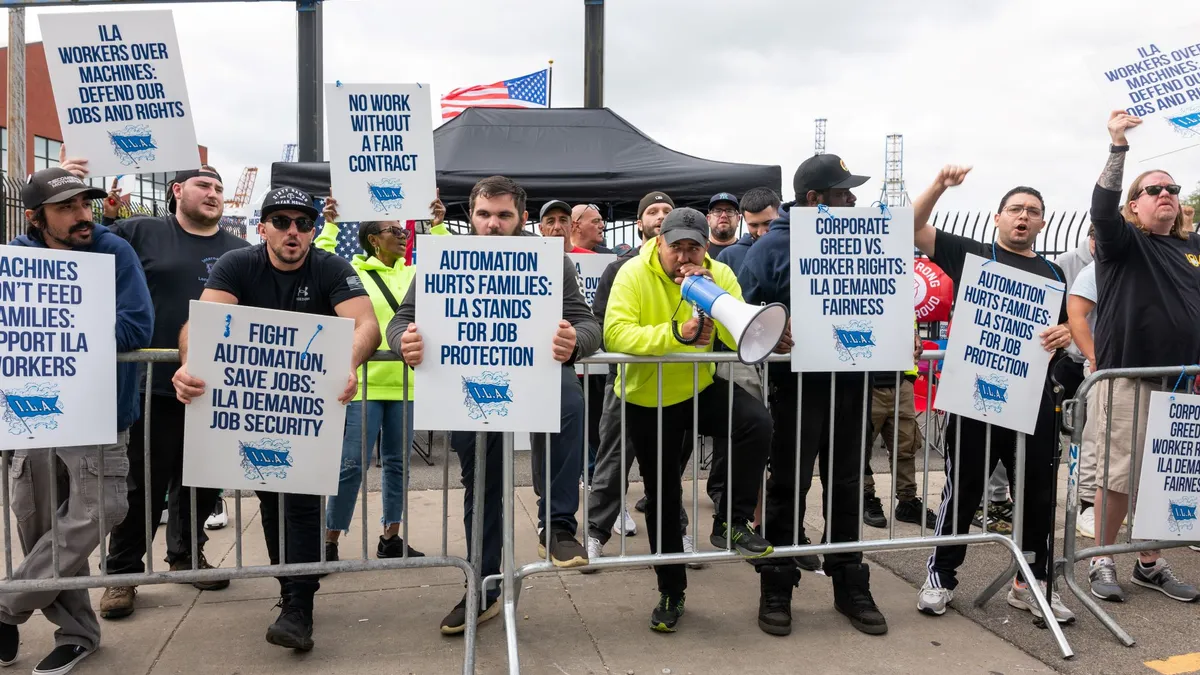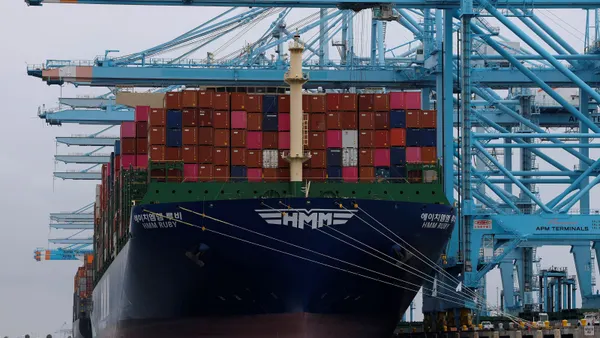Automation remains a major pending topic of discussion for the International Longshoremen's Association and the United States Maritime Alliance as the two entities return to the negotiating table.
Following a three-day strike the week of Oct. 1, the union agreed to a tentative deal on wages, and to extend their master contract until Jan. 15, 2025. The extension gives both parties additional time to return to the bargaining table to negotiate all other outstanding issues.
Automation concerns have been highlighted in several of the union’s statements and one of many reasons for halted negotiations, a few months ago.
Experts are split on what the next phase of negotiations will mean for shippers and union workers.
Addressing automation
One expert thinks the lack of automation development can hurt U.S. ports’ competitive standing versus other global ports.
“A focus on keeping ‘historical job functions’ will inevitably continue to undermine the competitiveness of US East and Gulf Coast ports in a global context,” CEO of Vespucci Maritime Lars Jensen said in a LinkedIn post on Sunday.
This could slowly worsen the ability of U.S. exporters to sell their goods overseas where they compete with other providers who export through more efficient ports, Jensen said.
Although port automation isn’t the only competitive parameter, it is a worsening measure when coming into a market where U.S. exporters are already suffering. “According to CTS data, North American exports are down -15% in August 2024 compared to August 2019 before the pandemic,” Jensen added.
In contrast, union workers are worried about how automation can impact their jobs.
“As U.S. ports—East Coast and West Coast alike—grapple with rising costs and the need for greater efficiency, the push to modernize through automation is inevitable. Yet, this creates a fundamental tension between labor and port operators,” Nick Vyas, founding director of USC Marshall’s Kendrick Global Supply Chain Institute, told Supply Chain Dive in an email.
Vyas said automation could streamline operations, improve cargo flow and cut costs, but it also threatens to displace dockworkers.
“The outcome of these negotiations may set a precedent for the future of port operations in the U.S., determining whether labor-intensive jobs will survive in the face of technological advancement,” he said.
The ILA’s stance on healthcare and more
Other issues pending negotiation include jurisdiction protections, healthcare and container royalties.
The union wants jurisdiction on what they consider “key tasks” at port facilities. For instance, operating cranes and servicing equipment should be done by ILA members and not outsourced to non-union members or automated systems.
Daggett said these issues are “on the line” because employers have tried to reduce healthcare benefits or claim a share of container royalty funds.
“We plan to meet with USMX as soon as possible to negotiate the best contract in ILA history,” Daggett said.













